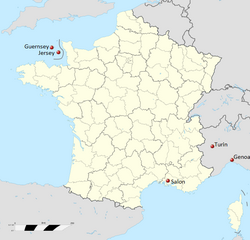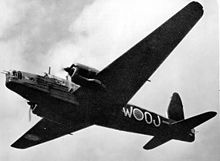
The Vickers Wellington was a British twin-engined, long-range medium bomber. It was designed during the mid-1930s at Brooklands in Weybridge, Surrey. Led by Vickers-Armstrongs' chief designer Rex Pierson; a key feature of the aircraft is its geodetic airframe fuselage structure, which was principally designed by Barnes Wallis. Development had been started in response to Air Ministry Specification B.9/32, issued in the middle of 1932, for a bomber for the Royal Air Force.
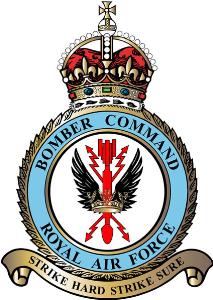
RAF Bomber Command controlled the Royal Air Force's bomber forces from 1936 to 1968. Along with the United States Army Air Forces, it played the central role in the strategic bombing of Germany in World War II. From 1942 onward, the British bombing campaign against Germany became less restrictive and increasingly targeted industrial sites and the civilian manpower base essential for German war production. In total 364,514 operational sorties were flown, 1,030,500 tons of bombs were dropped and 8,325 aircraft lost in action. Bomber Command crews also suffered a high casualty rate: 55,573 were killed out of a total of 125,000 aircrew, a 44.4% death rate. A further 8,403 men were wounded in action, and 9,838 became prisoners of war.

The Fairey Battle is a British single-engine light bomber that was designed and manufactured by the Fairey Aviation Company. It was developed during the mid-1930s for the Royal Air Force (RAF) as a monoplane successor to the Hawker Hart and Hind biplanes. The Battle was powered by the same high-performance Rolls-Royce Merlin piston engine that powered various contemporary British fighters such as the Hawker Hurricane and Supermarine Spitfire. As the Battle, with its three-man crew and bomb load, was much heavier than the fighters, it was therefore much slower. Though a great improvement over the aircraft that preceded it, its relatively slow speed, limited range and inadequate defensive armament of only two .303 (7.7 mm) machine guns left it highly vulnerable to enemy fighters and anti-aircraft fire.

The Armstrong Whitworth A.W.38 Whitley was a British medium bomber aircraft of the 1930s. It was one of three twin-engined, front line medium bomber types that were in service with the Royal Air Force (RAF) at the outbreak of the Second World War. Alongside the Vickers Wellington and the Handley Page Hampden, the Whitley was developed during the mid-1930s according to Air Ministry Specification B.3/34, which it was subsequently selected to meet. In 1937, the Whitley formally entered into RAF squadron service; it was the first of the three medium bombers to be introduced.
This is a list of aviation-related events from 1940:
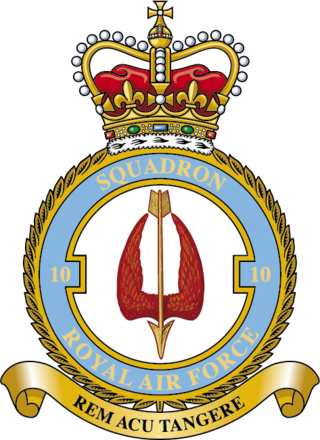
Number 10 Squadron is a Royal Air Force squadron. The squadron has served in a variety of roles over its 90-year history. It currently flies the Airbus Voyager KC2/KC3 in the transport/tanker role from RAF Brize Norton, Oxfordshire.

The RAF Advanced Air Striking Force (AASF) comprised the light bombers of 1 Group RAF Bomber Command, which took part in the Battle of France during the Second World War. Before hostilities began, it had been agreed between the United Kingdom and France that in case of war, the short-range aircraft of Bomber Command would move to French airfields to operate against targets in Nazi Germany. The AASF was formed on 24 August 1939 from the ten squadrons of Fairey Battle light bombers of 1 Group under the command of Air Vice-Marshal Patrick Playfair and was dispatched to airfields in the Rheims area on 2 September 1939.
No. 90 Squadron RAF is a squadron of the Royal Air Force.
No. 37 Squadron was a Royal Air Force squadron of the First and Second World Wars.

No. 40 Squadron of the Royal Air Force was formed in 1916 at Gosport as No. 40 Squadron Royal Flying Corps and was disbanded for the last time in 1957. The squadron also included many non-British members, including volunteers from the Royal Australian Air Force and Royal Canadian Air Force.
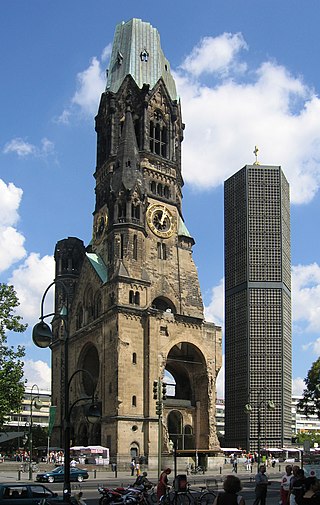
The Battle of Berlin was a bombing campaign against Berlin by RAF Bomber Command along with raids on other German cities to keep German defences dispersed. Air Chief Marshal Sir Arthur Harris, Air Officer Commanding-in-Chief (AOC-in-C) Bomber Command, believed that "We can wreck Berlin from end to end if the USAAF come in with us. It will cost us between 400 and 500 aircraft. It will cost Germany the war".
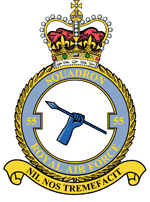
Number 55 Squadron was a flying squadron of the Royal Air Force (RAF). First formed in April 1917, the squadron saw action on the Western Front during the First World War. Based in the Middle East during the interwar period and the Second World War, No. 55 Squadron saw action over Iraq, Egypt, Libya and Italy. Between 1960 and 1993, the unit flew the Handley Page Victor. Initially on the Victor B.1A before becoming a tanker squadron in 1965 with the Victor B(K).1A/K.1/K.1A before converting to the Victor K.2 in 1975. Disbanding in October 1993, No. 55 Squadron were the last RAF unit to operate the Victor. Between 1996 and 2011, No. 55(Reserve) Squadron operated the Hawker Siddeley Dominie T.1 from RAF Cranwell, Lincolnshire, helping to train navigators for the RAF.

The Battle of the Heligoland Bight was the first "named" air battle of the Second World War, which began the longest air campaign of the war on 3 September 1939, the Defence of the Reich. After the declaration of war, RAF Bomber Command began operations against Nazi Germany but limited their attacks to those targets that were purely military and had little risk of civilian casualties. This largely limited their efforts to attacks on the Kriegsmarine warships in German ports to prevent their use in the Battle of the Atlantic.

Circus was the codename given to operations by the Royal Air Force (RAF) during the Second World War where bombers, with a mass escort of fighters, were sent over continental Europe to bring Luftwaffe fighters into combat. These were usually formations of 20 to 30 bombers escorted by up to 16 squadrons of escort fighters. Bomber formations of this size could not be ignored by the Luftwaffe.

No. 4 Group RAF (4Gp) was a Royal Air Force group, originally formed in the First World War, and reformed in the wake of the Second World War, mostly part of RAF Bomber Command, but ending its days in RAF Transport Command.
British Air Forces in France (BAFF) was a Royal Air Force (RAF) Command set up on 15 January 1940 led by Air Marshal Arthur Barratt, to provide unified command of the RAF in France. The Royal Air Force Component of the British Expeditionary Force for air support of the British Expeditionary Force (BEF) and the Advanced Air Striking Force for independent Bomber Command operations from French airfields. Barratt was charged with giving "full assurance" to the BEF of air support and to provide the BEF with
...such bomber squadrons as the latter may, in consultation with him, consider necessary from time to time.

Operation Banquet was a British Second World War plan to use every available aircraft against a German invasion in 1940 or 1941. After the Fall of France in June 1940, the British Government made urgent anti-invasion preparations as the Royal Air Force (RAF) engaged the German Luftwaffe in a struggle for air superiority in the Battle of Britain. In May 1940, the Air Ministry had realised that beyond the normal reserves of the RAF, it may be necessary to throw every serviceable aircraft into the battle. On 17 May, an Air Ministry meeting outlined ambitious plans to make use of various aircraft in the event of an invasion.
No. 114 Squadron was a squadron of the British Royal Air Force. It was first formed in India during the First World War, serving as a light bomber squadron during the Second World War and as a transport squadron post-war. It was last disbanded in 1971.
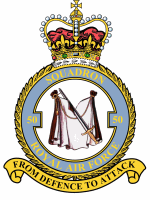
No. 50 Squadron was a squadron of the Royal Air Force. It was formed during the First World War as a home defence fighter squadron, and operated as a bomber squadron during the Second World War and the Cold War. It disbanded for the last time in 1984.

Ramrod 16 was an attempt by the Royal Air Force (RAF) to bomb the Koninklijke Hoogovens steelworks at IJmuiden in the Netherlands during the Second World War. After several recent abortive attacks a more elaborate plan was made for six Douglas Boston IIIA light bombers of 107 Squadron to attack again, with a Ramrod as a diversion. Ramrod 16 was to be flown by twelve Lockheed Ventura Mk II bombers of No. 487 Squadron RNZAF against the Hemweg power station in Amsterdam, not far upriver from IJmuiden.
